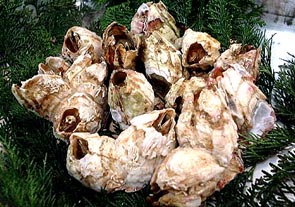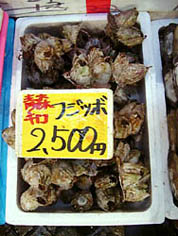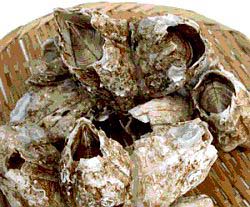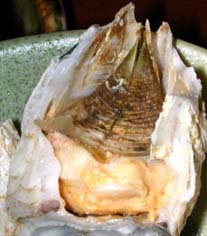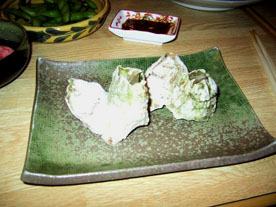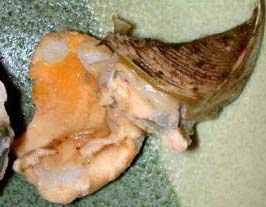
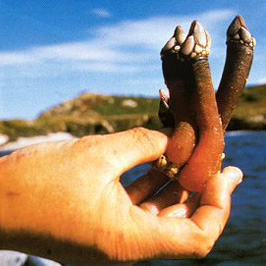
| Spain & Portugal Goose barnacle is one of the popular seafood in Spain and Portugal. Probably poaching or steaming is the most common way to cook barnacles rather than making good use of some exotic Spanish cuisine. In such a way, the rich natural flavour of this unique marine product may be enhanced and well presented. We have to deftly twist barnacle stalk from claw and pull out the slither of pink flesh hidden inside the black stalk. It tastes of the sea - mysterious, briny and a little gritty, like mussel flesh. If the beak-like end is opend up, a little black creature will come out, curled upside down, its feathered feet retracted. Chile |
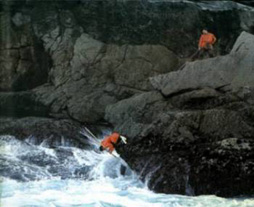 |
||||||||||
| Pretty risky way to harvest goose barnacles in Spain. | |||||||||||
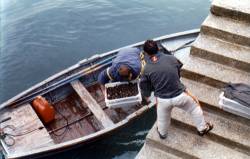 |
|||||||||||
| Harvested barnacles are unloaded the ship. | |||||||||||
| My friend who used to live in Chile described it's taste as: "it's a bit watery and as soft as bean curd, not as elastic as scallop or crab but certaily taste richer than them." | |||||||||||
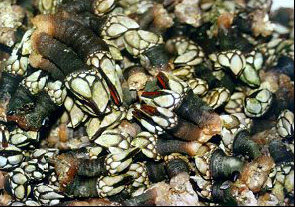 |
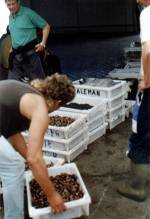 |
||||||||||
| Barnacles are now brought into the market and wait for customers. | |||||||||||
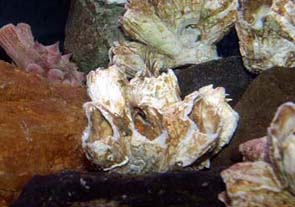
People were not used to eating barnacles until recently in Japan. About 15 years ago, one Japanese cook working in a high-class Japanese-style restaurant located in Aomori Prefecture (North part of Japan) noticed a lot of barnacles (called 'Minefujitsubo') discarded in the fishing port. This barnacle is not one of the common intertidal species but lives around 30-40 m in depth and its size is also big, 4-5 cm in length. Fishermen considered these barnacles bothering since they often cut fishing nets and damaged cultured scallops. The cook wondered if he could cook these barnacles in some way and brought them back to his restaurant.
He started to serve his barnacle dish to the regular customers of the restaurant as service and they loved it. He became quite confident in this particular species of barnacle as excellent material for seafood dishes and told about it to his fellow cooks working in different places. Soon this barnacle was widely regarded as high-class, rare seafood and nowadays it costs about 15 pounds per kg at markets.
It tastes like crab plus urchin divided by two. Both are very popular seafood in Japan and especially urchin is one of the most favorite materials for 'Sushi' (quite expensive too !!), therefore, this barnacle was immediately supported by fastidious Japanese tongues.
